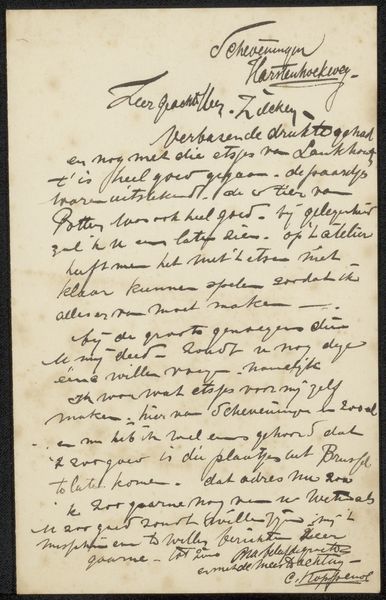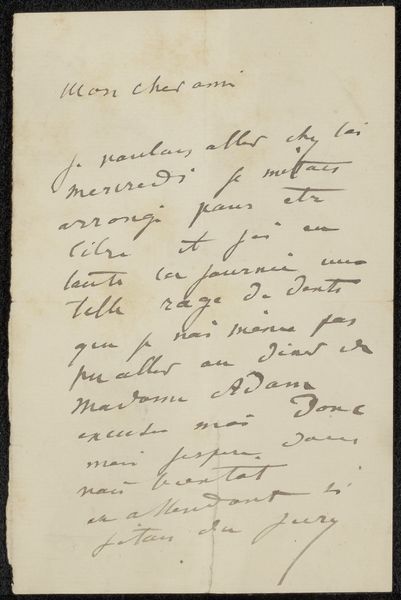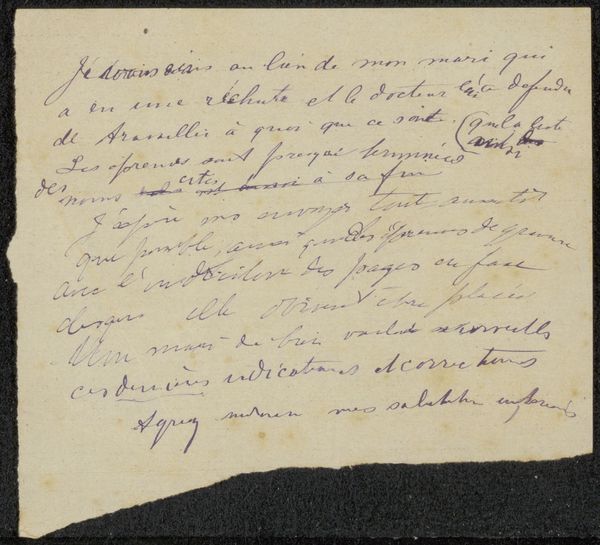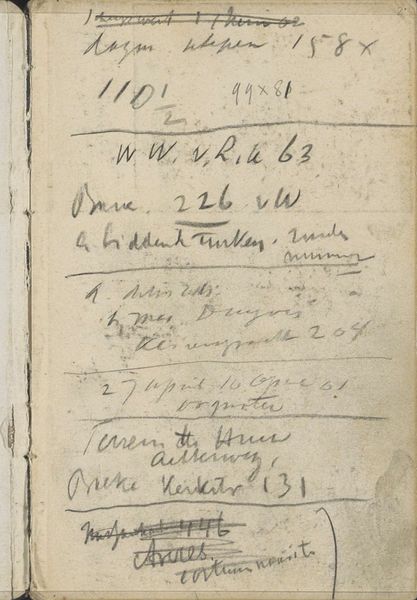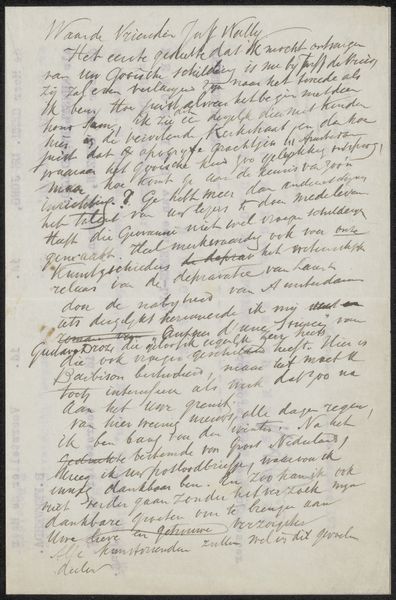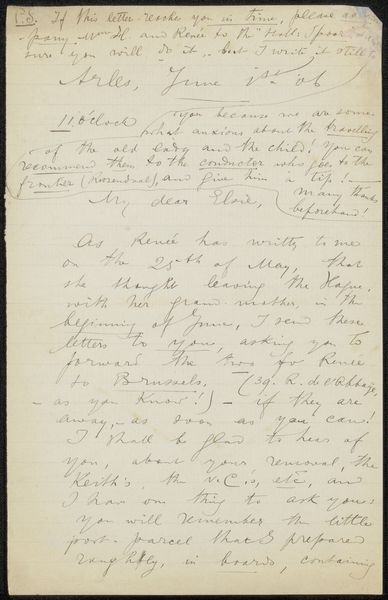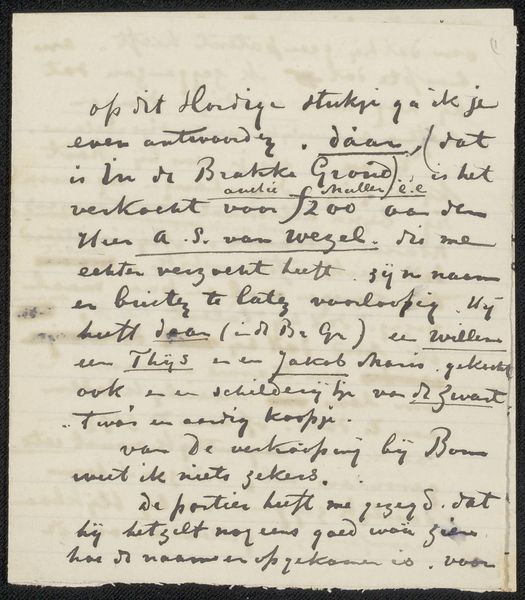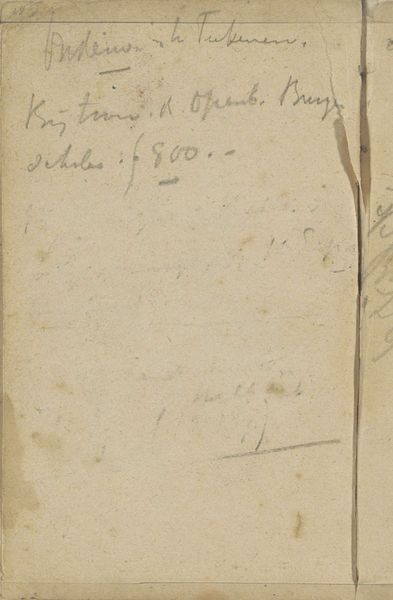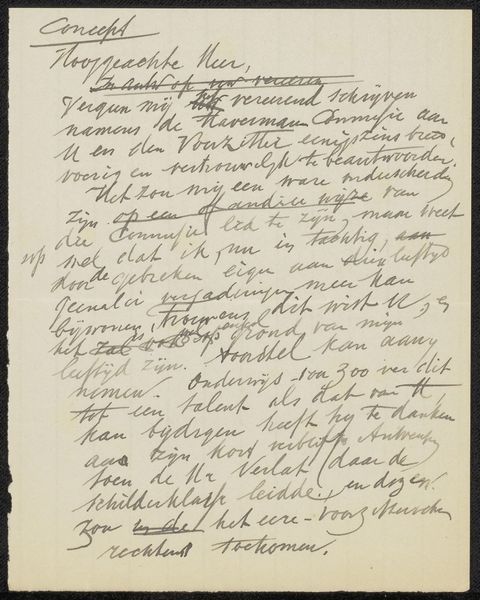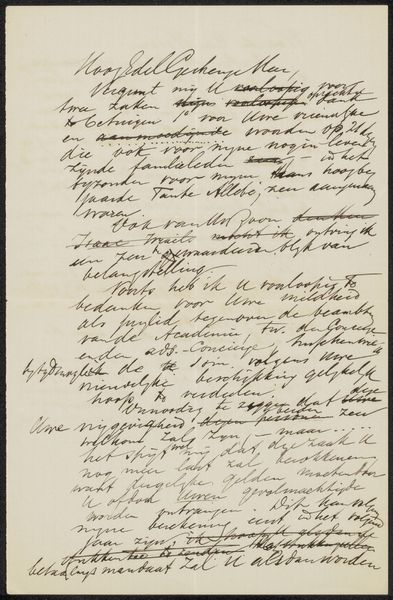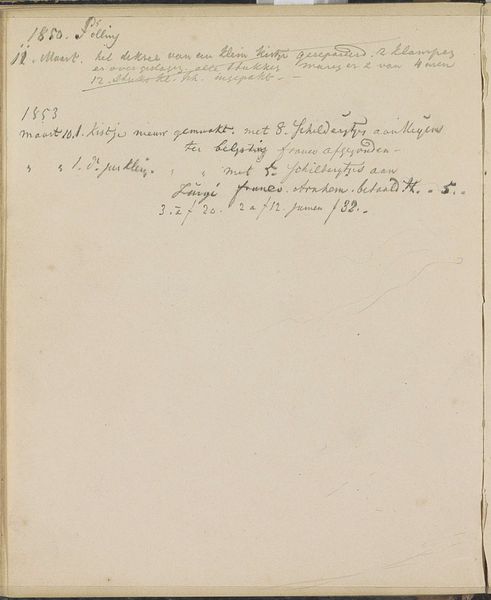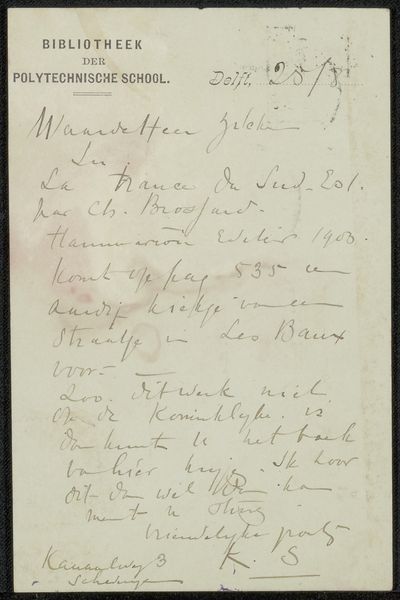
drawing, paper, ink, pen
#
drawing
#
paper
#
ink
#
pen
Copyright: Rijks Museum: Open Domain
Curator: August Allebé created "Fragmenten van een dagboek," or "Fragments of a Diary," sometime between 1848 and 1927. It's currently held here at the Rijksmuseum. What’s your immediate reaction? Editor: Chaotic! The surface is entirely consumed by frantic penmanship. The stark contrast of dark ink on aged paper creates a rather melancholic mood. I can barely discern any structure, though. Curator: The illegibility is part of its power. Think about what a diary represents—private thoughts, unfiltered reflections, often documenting everyday experiences. This isn't meant for public consumption; it's raw expression, tied to identity and memory. Editor: I can appreciate that idea, but without being able to read the text, I’m left focusing on the aesthetic impact of the writing itself. The artist's penmanship, the looping of the letters. Do those features tell us anything about how the artwork operates aesthetically? The lines almost feel calligraphic in places. Curator: Indeed, consider that Allebé was part of a generation grappling with immense social and political changes. His art, his observations are inevitably influenced by the climate. Deciphering fragments—moments, ideas, places—becomes an act of piecing together not just his world, but also our understanding of that period. Editor: Looking closely, I notice how some areas are denser than others. A semiotic analysis reveals certain repeated shapes in the ascenders and descenders, could these signify certain recurrent themes? I wonder what effect he sought with the distribution of that ink? Curator: Perhaps these aesthetic aspects amplify the broader narrative, illustrating themes related to identity. This era confronted the evolving social dynamics as individuals sought ways to express and reclaim autonomy amid evolving gender norms and shifting expectations around class. Editor: I confess I appreciate it more having our discussion. Considering the marks as both content and aesthetic—visual and linguistic structure operating at once. Thank you, as always, for widening the lens. Curator: It’s equally fulfilling for me! Every interpretation provides another level of access to understanding how these objects affect us now, in light of a context that we continually re-examine.
Comments
No comments
Be the first to comment and join the conversation on the ultimate creative platform.
